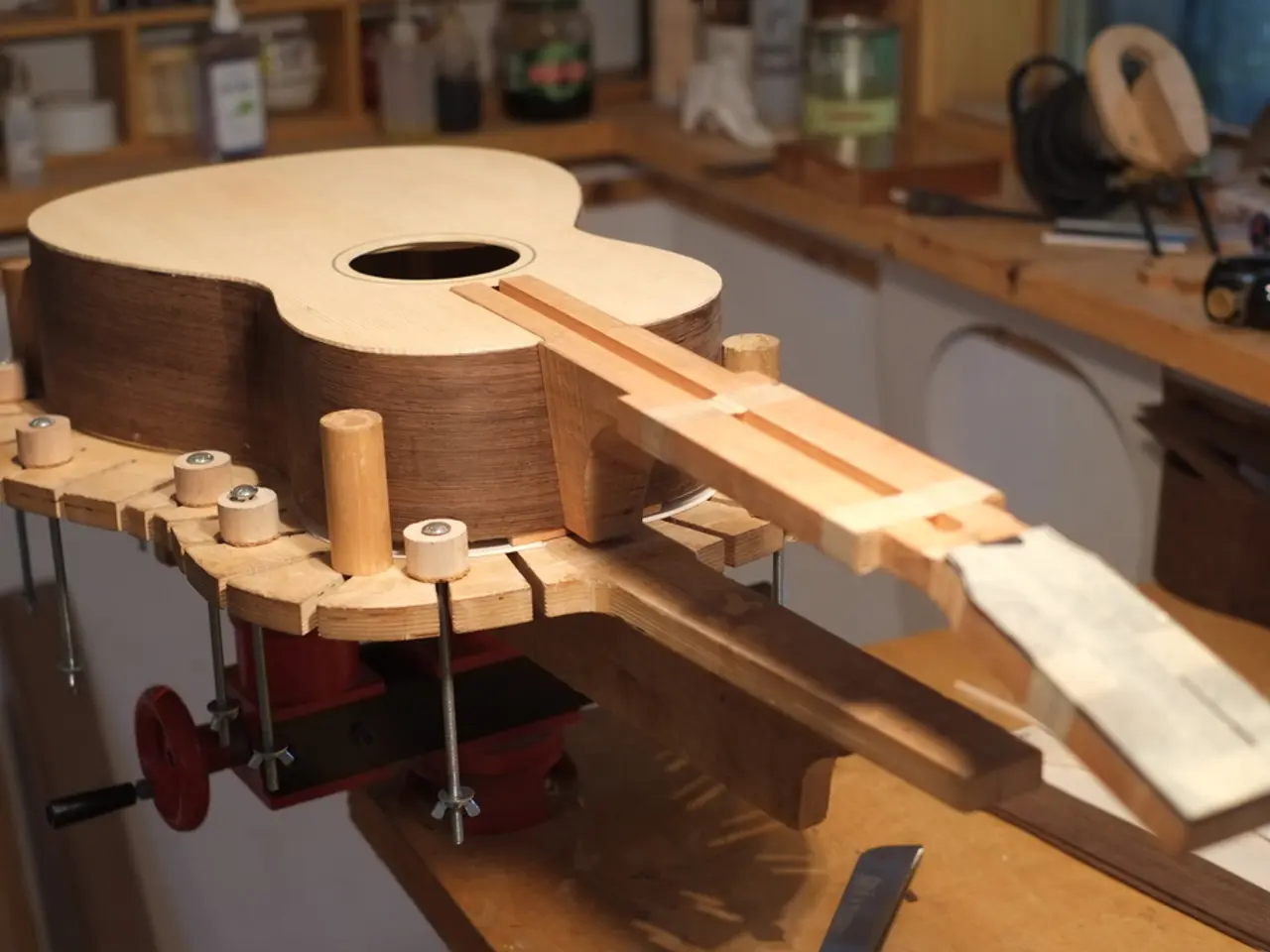Exploring Reverb's Range: From Subtle Spatial Effect to Dramatic Deepness
In the realm of sound design and music production, reverb plays a crucial role in adding depth, space, and emotional depth to recordings. This article will delve into the essential parameters of reverb and offer tips to help you craft the perfect reverb tail for your mix.
Reverb, essentially the echoey effect you hear in a big empty room, is created by multiple reflections that blend together to create a smooth, prolonged sound. By understanding how each parameter influences the spatial perception and tonal character of your mix, you can tailor them to fit the material and the desired effect.
Decay Time
The decay time controls how long the reverb tail lasts after the sound. Use short decay times for smaller spaces and tighter mixes, such as studio rooms, and longer decay times for larger, more ambient spaces, like halls or cathedrals. Adjust decay to avoid muddying the mix; longer isn't always better, as it can make things sound washed out.
Pre-Delay
Pre-delay introduces a delay between the direct sound and the onset of the reverb. Increasing pre-delay helps keep the initial attack or transient clear and upfront before the reverb washes in, which preserves clarity on vocals, drums, and percussive elements. Typical pre-delay ranges from 10 to 50 ms depending on the sound source and desired spaciousness.
Diffusion
Diffusion controls how dense or spread out the reverb reflections are. Higher diffusion makes the reverb smoother and more uniform—ideal for pads, vocals, or to create a wash that doesn't emphasize individual reflections. Lower diffusion retains individual echo patterns, which suits rhythmic or percussive sounds where articulation matters.
Size
Size adjusts the perceived size of the simulated space. Larger size settings create a sense of a big, spacious room, while smaller size settings make the space feel intimate. This often works hand-in-hand with decay time to define the room character.
When blending reverb with drums or other instruments, use the "top-down" approach: first balance the send levels feeding the reverb, then bring up the reverb aux channel slowly until it subtly glues the elements together without becoming an obvious effect.
Tailor reverb types and parameters to the material. For example, room reverbs work well for more natural, intimate sounds, while hall reverbs offer grandeur and space for orchestral or live performance feels. Spring and chamber reverbs have distinctive tonal characteristics suited for guitars, vocals, or vintage styles.
Use damping (high-frequency decay control) to shape brightness: increasing damping warms the reverb and reduces harshness, useful for bright mixes; decreasing it keeps the reverb airy and present.
By systematically adjusting these parameters and monitoring their effect on the mix balance and clarity, you can craft a reverb that enhances spatial depth without overpowering the direct sound or muddying the arrangement.
Longer decay creates a larger, more spacious sound on vocals, while shorter decay times create a more intimate feel. Pre-delay controls the time between the original sound and the onset of reverb. Wet/dry mix ratios can be manipulated to control the amount of reverb in a sound.
Reverb can evoke powerful emotions, making it a powerful tool for shaping the listener's experience. Common reverb effects include hall reverb, room reverb, and plate reverb. Hall reverb type simulates large spaces, while room reverbs capture the ambiance of smaller acoustic spaces. Echo involves distinct, repeated sound reflections with noticeable delay between them. Early reflections play a vital role in defining the perceived space in a mix.
When working on your mix, remember to use reference tracks to compare your work with similar songs. With practice and experimentation, you'll be able to harness the power of reverb to create harmonious and unified sounds, adding rich layers of creativity and emotional depth to your productions.
- Decay time, pre-delay, diffusion, size, and damping are essential parameters in music production that influence the spatial perception and tonal character of the mix.
- To keep the initial attack or transient clear and upfront, adjust the pre-delay in your music production to introduce a delay between the direct sound and the onset of the reverb.
- Using a lower diffusion in music production retains individual echo patterns, which suits rhythmic or percussive sounds where articulation matters.
- Engage the "top-down" approach when blending reverb with drums or other instruments in your music production, by first balanced the send levels feeding the reverb and then bringing up the reverb aux channel slowly until it subtly glues the elements together without becoming an obvious effect.




